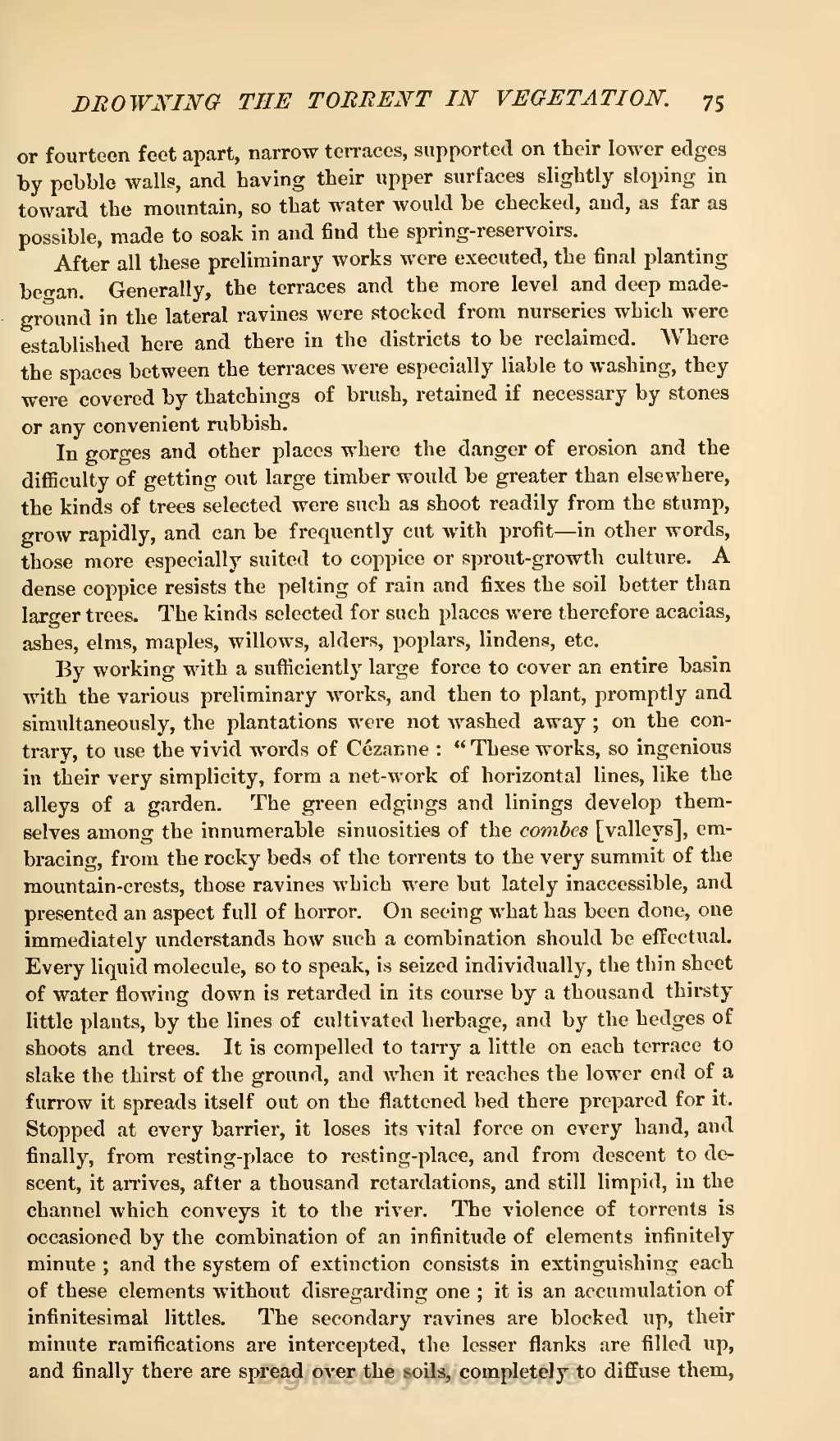or fourteen feet apart, narrow terraces, supported on their lower edges by pebble walls, and having their upper surfaces slightly sloping in toward the mountain, so that water would be checked, and, as far as possible, made to soak in and find the spring-reservoirs.
After all these preliminary works were executed, the final planting began. Generally, the terraces and the more level and deep made ground in the lateral ravines were stocked from nurseries which were established here and there in the districts to be reclaimed. Where the spaces between the terraces were especially liable to washing, they were covered by thatchings of brush, retained if necessary by stones or any convenient rubbish.
In gorges and other places where the danger of erosion and the difficulty of getting out large timber would be greater than elsewhere, the kinds of trees selected were such as shoot readily from the stump, grow rapidly, and can be frequently cut with profit—in other words, those more especially suited to coppice or sprout-growth culture. A dense coppice resists the pelting of rain and fixes the soil better than larger trees. The kinds selected for such places were therefore acacias, ashes, elms, maples, willows, alders, poplars, lindens, etc.
By working with a sufficiently large force to cover an entire basin with the various preliminary works, and then to plant, promptly and simultaneously, the plantations were not washed away; on the contrary, to use the vivid words of Cézanne: "These works, so ingenious in their very simplicity, form a net-work of horizontal lines, like the alleys of a garden. The green edgings and linings develop themselves among the innumerable sinuosities of the combes [valleys], embracing, from the rocky beds of the torrents to the very summit of the mountain-crests, those ravines which were but lately inaccessible, and presented an aspect full of horror. On seeing what has been done, one immediately understands how such a combination should be effectual. Every liquid molecule, so to speak, is seized individually, the thin sheet of water flowing down is retarded in its course by a thousand thirsty little plants, by the lines of cultivated herbage, and by the hedges of shoots and trees. It is compelled to tarry a little on each terrace to slake the thirst of the ground, and when it reaches the lower end of a furrow it spreads itself out on the flattened bed there prepared for it. Stopped at every barrier, it loses its vital force on every hand, and finally, from resting-place to resting-place, and from descent to descent, it arrives, after a thousand retardations, and still limpid, in the channel which conveys it to the river. The violence of torrents is occasioned by the combination of an infinitude of elements infinitely minute; and the system of extinction consists in extinguishing each of these elements without disregarding one; it is an accumulation of infinitesimal littles. The secondary ravines are blocked up, their minute ramifications are intercepted, the lesser flanks are filled up, and finally there are spread over the soils, completely to diffuse them.

